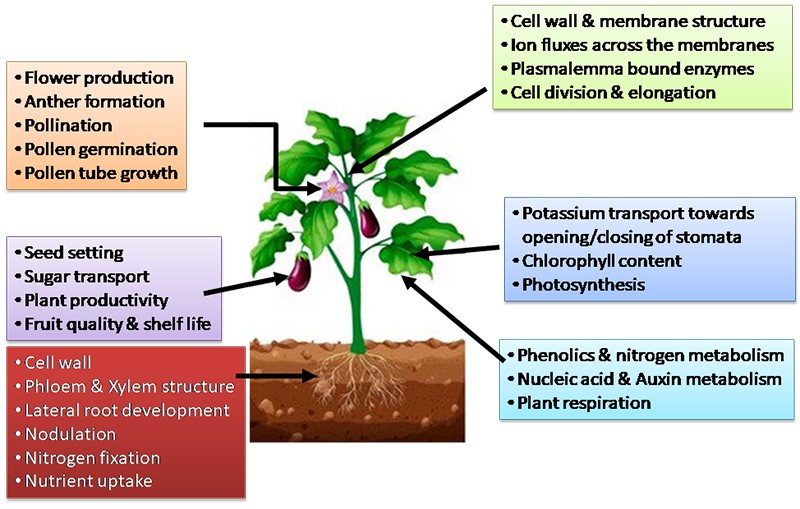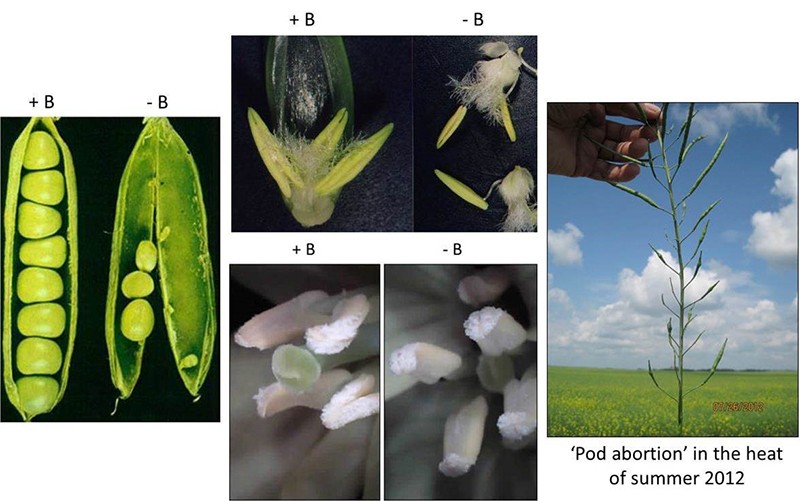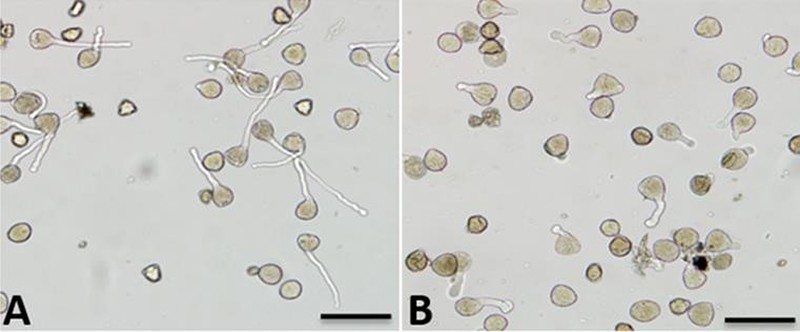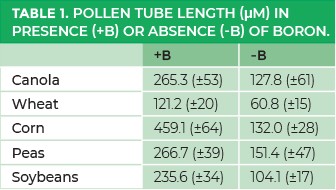Boron has no impact, so they say.
Boron (B) plays a key role in a wide range of physiological processes that allow plants to germinate, grow, reproduce and remain healthy. No wonder it’s the first nutrient that plants seek!
Boron is critical to the growth of pollen tubes, germination of pollen grains and fertilization, and helps to ensure good grain fill. A deficiency can cause reduced pollen tube growth and flowering, reduced seed set and in canola, which has higher boron requirements than cereal crops, aborted flowers and pod blanks or missing seeds in the pod.
The first step in proactively managing boron is to understand some of the key aspects that lead to boron deficiency, and how to identify and prevent a deficiency to mitigate stress and preserve yield. Read on to learn more about boron and why growers should be paying attention to this important nutrient throughout the growing season.
Boron Availability
Multiple factors affect boron availability. For example, high pH soils, soils that were overly limed and soils that inherently have a high level of calcium or a heavy supply of potassium or nitrogen can have limited boron availability. Sandy soils that are prone to leaching of anions such as boron, or soils with low organic matter also have the tendency to be low on boron.
Being mobile in the soil and hardly mobile in most plants (except for crops able to produce polyols, such as apples) and being translocated through mass flow, boron availability is weather dependent. Deficiency can then be triggered by environmental conditions even if boron soil levels are sufficient at the start of the season. For example, cold, wet or hot and dry conditions can tremendously reduce the availability of the boron and create a transient shortage, especially at flowering time for canola, wheat, pulses and many other flowering crops across the Prairies.

Boron Deficiency
Most farmers and agronomists are aware of or have seen symptoms of boron deficiency in their canola or pea crops; but, surprisingly, an increased number of wheat crops across the Prairies have been showing symptoms of boron over the past few years, as well.
A boron deficiency can present a variety of tell-tale symptoms including thick, curled, brittle leaves; death of growing points; the formation of multiple side shoots; reduced pollen tube growth and flowering; seed and pod abortion; and a reduced seed set.

As boron affects flower development and pollen viability, the number of grains in each wheat ear is reduced. By the time the farmer sees the symptoms, it may be too late to correct them and preserve the yield.
The signs of boron deficiency in cereals and wheat include:
- Deformed, distorted growing points
- Distorted young leaves, which may die off if the deficiency is severe
- Ears that appear short and have blind grain sites
Note: Low boron levels in the soil exacerbate the deficiency symptoms.

In all crops, the germination of pollen grains and the elongation of pollen tubes highly depend on the availability of boron and calcium. A lack of boron and calcium results in seed abortion – especially when the environmental conditions are not conducive to the uptake of either nutrient.
Growers can help prevent seed and flower abortion, with a timely supplementation of boron (and calcium) during the peak of flowering.

OMEX Has the Solution
 OMEX offers a wide variety of solutions, including starter and foliar fertilizers, to proactively address boron deficiency throughout the growing season.
OMEX offers a wide variety of solutions, including starter and foliar fertilizers, to proactively address boron deficiency throughout the growing season.
At the outset of the season, boron can be included at burn-off or in-furrow with the starter fertilizer; Sunalta B, for example. Boron can also be supplied by coating every granule of a dry NPKS blend, or porous material such as gypsum, with Perfuze B for an even distribution of micronutrients in the field.
In-season, liquid foliar fertilizers Super B (10% B) and KB78 (8% B) provide the most available form of boron (boric acid) to correct deficiency or supplement boron during peak demand. Super B can also be combined with Nutri-Boost or C3 to encourage healing and recovery from hail or insect damages.
Talk to your retailer or OMEX sales representative about how to incorporate boron into your fertility programming. Your OMEX rep can provide you with a guided nutrient management strategy for the growing season that includes timely applications of boron to prevent deficiency, mitigate stress, and preserve yield and quality of your crop.
